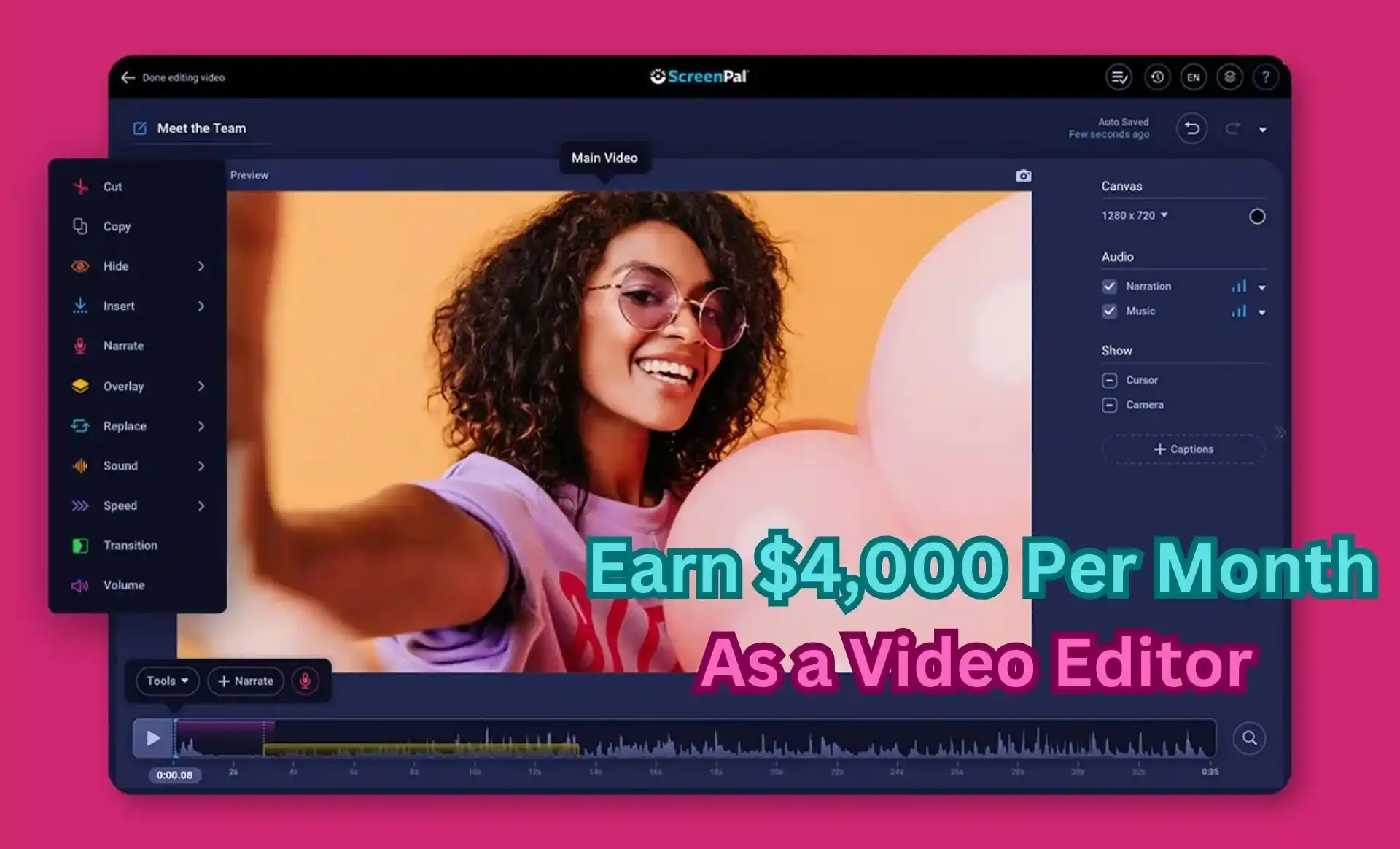Video editing is an in-demand skill in today’s digital economy. With the rise of content creators, businesses, and influencers needing high-quality video content, skilled video editors can earn a comfortable living. If you want to make $4,000 per month as a video editor, here’s a step-by-step guide to help you achieve that goal.
1. Master Essential Video Editing Skills
To become a professional video editor, you need to develop a solid foundation in video editing software and techniques. Focus on mastering industry-standard tools such as:
Adobe Premiere Pro
Final Cut Pro X (for Mac users)
DaVinci Resolve (for color grading and editing)
After Effects (for motion graphics and effects)
Additionally, improve your storytelling, pacing, transitions, color correction, and audio editing skills to make your work stand out.
2. Build a Portfolio
A strong portfolio showcases your expertise and attracts clients. To build a compelling portfolio:
Edit sample videos (e.g., travel vlogs, commercials, event recaps, short films)
Offer free or discounted work for small businesses or influencers
Showcase before-and-after edits to highlight your skills
Create a personal website or use platforms like Behance, Vimeo, or YouTube to display your work
3. Choose the Right Income Streams
There are multiple ways to make money as a video editor. To reach $4,000 per month, consider combining different income streams:
Freelancing
Freelancing is one of the most effective ways to earn a consistent income. You can find clients on platforms like:
Upwork
Fiverr
PeoplePerHour
Freelancer
Toptal (for high-end clients)
Charge competitive rates based on experience. Beginners may start with $15-$30 per hour, while experienced editors can charge $50-$100 per hour.
Retainer Clients
Instead of one-off projects, secure long-term contracts with YouTubers, businesses, or marketing agencies. For example:
Editing 10 videos per month for a YouTuber at $400 per video = $4,000
Handling weekly edits for a marketing agency at $1,000 per project = $4,000
Content Creation & Online Courses
If you have advanced editing skills, you can create tutorials or online courses on platforms like Udemy, Skillshare, or YouTube monetization.
Stock Footage & Templates
Sell video templates, transitions, or stock footage on platforms like:
Envato Elements
Motion Array
Shutterstock
4. Find High-Paying Clients
To reach $4,000 per month, target high-paying clients rather than low-budget projects. Here’s how:
Specialize in corporate videos, commercial ads, or high-quality YouTube content
Network on LinkedIn, Facebook groups, and Reddit communities
Cold-email potential clients with a compelling pitch and portfolio
Offer bundled services (editing + color grading + motion graphics) to increase value
5. Increase Efficiency & Productivity
Time is money. To maximize your earnings:
Use keyboard shortcuts and templates to speed up editing
Outsource repetitive tasks (e.g., subtitles, rough cuts) to assistants
Batch-edit videos to streamline workflow
Invest in a high-performance PC or Mac for faster rendering
6. Price Your Services Strategically
Many new editors undercharge. Use these pricing strategies:
Charge per video rather than per hour to avoid undervaluing your time
Offer tiered pricing (e.g., basic, standard, premium packages)
Provide add-ons like motion graphics, sound design, and social media edits
7. Scale Your Video Editing Business
Once you reach a steady income, consider scaling:
Hire an assistant editor to handle repetitive tasks
Expand services (e.g., motion graphics, animation, video ads)
Create a video editing agency to take on multiple clients
Final Thoughts
Earning $4,000 per month as a video editor is achievable with the right skills, strategy, and client base. Focus on building a strong portfolio, finding high-paying clients, and diversifying income streams. With dedication and smart pricing, you can turn video editing into a lucrative full-time career.
